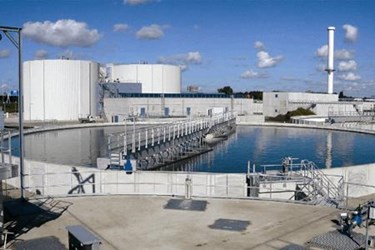Why Wastewater Treatment In India Is No Longer Optional

By Divyesh Delawala, Oceanides Global
Wastewater treatment in India can no longer be seen as some conservational fad. With depleting freshwater sources, water treatment is absolutely imperative. Depleting water resources is a worldwide problem with almost all nations grappling with water scarcity. But India’s massive population, coinciding with rising pollution, makes its water scarcity and clarity concerns critical.
India has all the typical problems associated with developing countries. There is inadequate water supply for a rapidly increasing industrial, agricultural, and domestic demand. This has only increased the deterioration of available water resources. Clearly, wastewater management can no longer be ignored.
In fact, India direly needs a comprehensive national policy on wastewater management. The limited and inadequate resources we have today means that whatever resources we do have, we must utilize them wisely. Managing and treating wastewater is just part of that.
But before this, let us understand the challenges to wastewater treatment in India:
Lack of pretreatment of wastewater
Wastewater treatment is actually a systematic process and it starts at the very source. For instance, industrial waste or large domestic waste points like a large society/complex must have a sewage treatment plant (STP) system where wastewater goes through some sort of initial treatment before begin dumped into a large plant.
This is particularly important for industrial waste, especially for industries dealing with chemical waste. Wastewater must be treated at source before it goes into a wastewater treatment plant.
Agricultural and urban runoff
One of the effects of rising population and industrialization is urban runoff. This is the stormwater that runs off into storm drains instead of percolating into the soil. This depletes the groundwater (because the rainwater does not get a chance to be absorbed into the ground) and causes flooding. It also ensures that domestic waste and untreated water runs off into water resources like lakes and rivers.
Severe lack of wastewater treatment plants
The management of wastewater treatment in India must start with an adequate wastewater treatment infrastructure. However, this very infrastructure is severely lacking in India. According to official figures, the present installed capacity can treat only about 30 percent of the waste. Two of our biggest cities, Delhi and Mumbai, are running less than half of the required number of waste treatment plants.
In fact, of the waste treatment plants that are there, many are not even functioning. Either they are in severe need of repairs and maintenance or they simply never took off. The figures mean that about 70 percent of our water remains untreated. This is a truly alarming number because this untreated water further joins other sources of water, contaminating these further. With such a large number of population, this untreated water is simply too massive a volume to ignore.
Lack of will to invest further
The severe lack of wastewater treatment infrastructure is not accidental. The truth is that there is not enough public or government will to take the right action. While many countries have realized that wastewater management must be an integral part of water management (and hence, a critical part of a country’s infrastructure), there is still a telling lack of action to reflect this in India. Despite recent efforts to address waste management, actual investment still sits pretty low.
Lack of private partnership
Given the magnitude of the problem, wastewater treatment in India cannot be just government responsibility. The truth is that the government simply does not have the resources to meet the massive demand. The obvious solution is to look for private-public partnership. However, this too is short of the required capacity.
By inviting private partnership in wastewater and sewage management, we can take advantage of better technology and localized systems and find efficiency. Of course, private partnership will also give this field a much needed shot of finance.
The other desirable effect is of reaching a much wider scope. Smaller towns and villages often lack in resources to set up competent wastewater management plants. A private investment can provide the solution here. In fact, private entrepreneurs can also be instrumental in managing and maintaining India’s ill-performing STP plants.
Conclusion
Rising population, urbanization, and industrialization has led to an almost unmanageable wastewater problem in India. This is leading to toxic contamination of our water sources. We must find solutions to rising challenges since wastewater treatment in India is simply too important to be ignored
